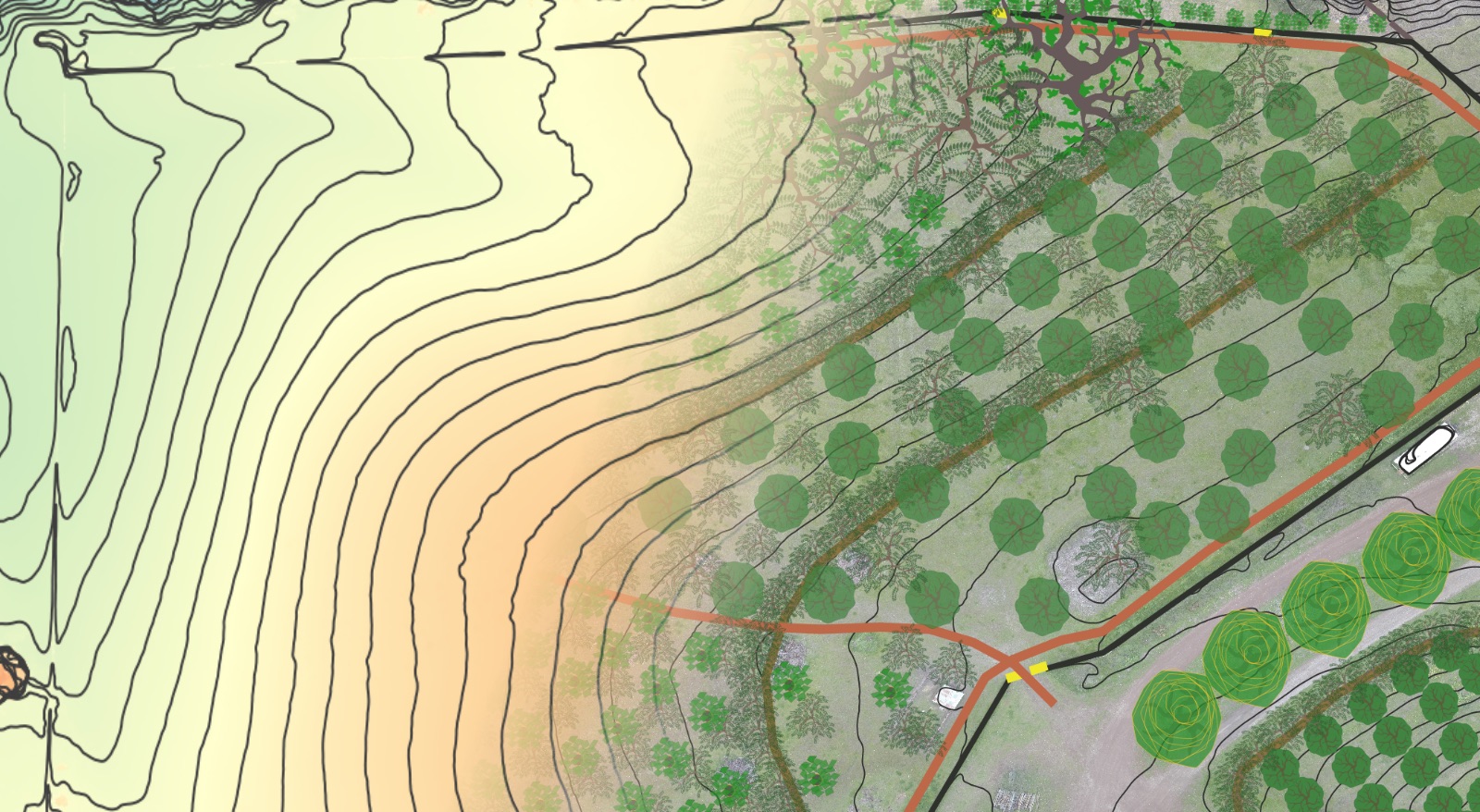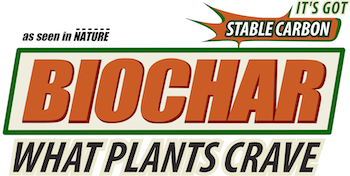When pigs are to be kept in a permanent or semi-permanent hard pen, a deep bedding system inoculated with indigenous micro-ogranisms (IMOs) should be used to improve sanitation for the animals and people tending them and to eliminate the smell of pig manure.
This method for healthy, low-maintenance, pleasant smelling confinement pig rearing was developed by Dr. Cho Han-Kyu in South Korea in the 1960’s. It employs a layered deep bedding system that is inoculated with a site-sourced indigenous micro-organism mix (IMO). Step-by-step instructions for developing a site-specific IMO mix are detailed in DIY Soil Fertility – Part 7: Indigenous Micro-Organism Inoculants (Korean Natural Farming).
Why No Smell?
The biologically active floor in a KNF style pig pen digests animal wastes so rapidly that feces and urine do not build up or begin to break down anaerobically. Because the manure is so quickly digested, there are no flies, which creates a much healthier environment for the pigs (and for the people tending them). The critical component is the IMO inoculant that should be cultured on-site to select microbial strains already proven to be viable in that environment. The floor should also be kept dry so that the moisture is immediately removed from the manure, which further prevents anaerobic microbes from propagating.
Deep Bedding Layers
The deep bedding system used in the pig pen is composed of the following layers and should be 4’ deep for least maintenance and best animal outcomes:
- A 6” layer of activated biochar. This helps maintain microbial populations and regulates moisture.
- A layer of large logs to create a subsurface aerobic layer ~ 12-24” thick. Larger logs are better because the pigs can’t move them and they will last for many years. Lay the logs in roughly parallel to minimize large gaps and to reduce the amount of wood chips that will be required for the following layer.
- A layer of coarse wood chips or whatever dry carbonaceous material are available– generally 12-30” thick. The higher the carbon content of the material the longer it will last.
- A layer of soil 2-3” thick.
- Inoculate at this point with IMO-4 at roughly 330 lbs/acre, or approximately 2-5 gallons per 100 sqft.
- The floor now mimics a forest floor, which harbors many beneficial micro-organisms.
- A layer of chopped straw or sawdust, top dressed with any remaining IMO-4.
- A sprinkling of ~ 5lbs of biochar per 100 sqft.
- A sprinkling of salt at .3% by volume of the woodchip-soil-sawdust layers, roughly 2 – 2.5 gallons per 100 sqft.
- OPTIONAL BUT RECOMMENDED: Spraying the top with a Lactobacillus solution (LAB) and fermented plant juice will help to active the IMOs.
When layered this way and inoculated with IMO-4, the floor of the pig pen essentially becomes a giant aerobic stomach (like a healthy forest floor) capable of digesting the pig manure as fast as it is produced.
How To Construct A KNF Pig Barn
- Orient the barn with the lengthwise on a north-south axis. The sun should pass over the east-west facing sections of overlapping roof.
- Construct side walls of concrete block, hog panels, corrugated metal, or woven wire fencing attached to strong posts – anything strong enough to hold ~ 4-5′ of bedding layers and to withstand rooting by the pigs.
- OPTIONAL: Add in a membrane layer on the ground level if the pen is located in an area with a high water table – this can help to prevent the bedding media from wicking up excess moisture (the floor should remain dry). If the floor of the barn is concrete or soils remain dry throughout the year underneath this is not necessary.
- The walls should be largely open (pole barn style) to facilitate good airflow. Small in-pen shelters can be provided for the pigs to take shelter from cold or hot winds.
- Both roof sections should be ~70% shade and 30% sun to mimic the light conditions found on a healthy forest floor. This is important for the ongoing health of the microorganisms that will be digesting all of the pig manure in the deep bedding system. Use clear or lightly tinted corrugated panels for the light-admitting sections of the roof.
- The south facing section of roof should have a gap between it and the north facing section of roof (similar to clerestory windows). As the roof sections heat up from the sunlight they will create a natural convection current that will help to draw air through and out of the pen.
- Layer in bedding materials and inoculate them as detailed above.




Watch Chris Trump’s excellent video walk through of how to construct this type of no-smell pig pen in this video:
Additional Set Up Tips
- Set up the water source and the food trough at opposite ends of the pig pen. This will necessitate that the pigs travel back and forth between water and food. This extra bit of physical activity, while small, is important in confinement operations. The physical action of the pigs walking back and forth will also help to till the upper few inches of bedding and help to coat any manure with the biologically active floor materials and facilitate more rapid breakdown.
- Set up the water so that it drains out of the pig pen. Pigs love to make a mess with water. Don’t let them create puddles or wallows in the pen, as these areas will become anaerobic and development smells and draw flies. Install a drain tray that drains out of the pig pen underneath a fixed watering point to eliminate puddle formation.
Maintenance
KNF pig pens are very low maintenance once they are initially set up. It is important to add carbon to the top to keep the log layers covered (mostly for the comfort of the pigs). Depending on the type of carbon used this could could be done every few weeks to quarterly or longer, with coarse woodchips generally lasting the longest.
Material does not need to be removed as with other styles of pig pens when bedding is considered “spent” – i.e. filled up with feces that haven’t broken down. Just like a living forest floor, the bedding doesn’t have to be removed, it just needs to be refreshed with additional layers of carbon laid on top as the old ones break down (like seasonal leaf fall).
Using large logs underneath for the aerobic layer will help the floor maintain its function for many years, especially is rot-resistant hardwood species are used.
Troubleshooting
What if the pen begins to smell? Most likely there is too much moisture building up in then pen. Check the water system, and ensure it drains outside the pen. If an additional microbial boost is needed, spray with lactic acid bacteria (see PDF linked below).
Additional Resources
- PDF – Natural Farming: Fermented Plant Juice
- PDF – Natural Farming: Lactic Acid Bacteria
- Learn more about Korean Natural Farming – Cho Global Natural Farming
- Cho’s Global Natural Farming PDF Manual




